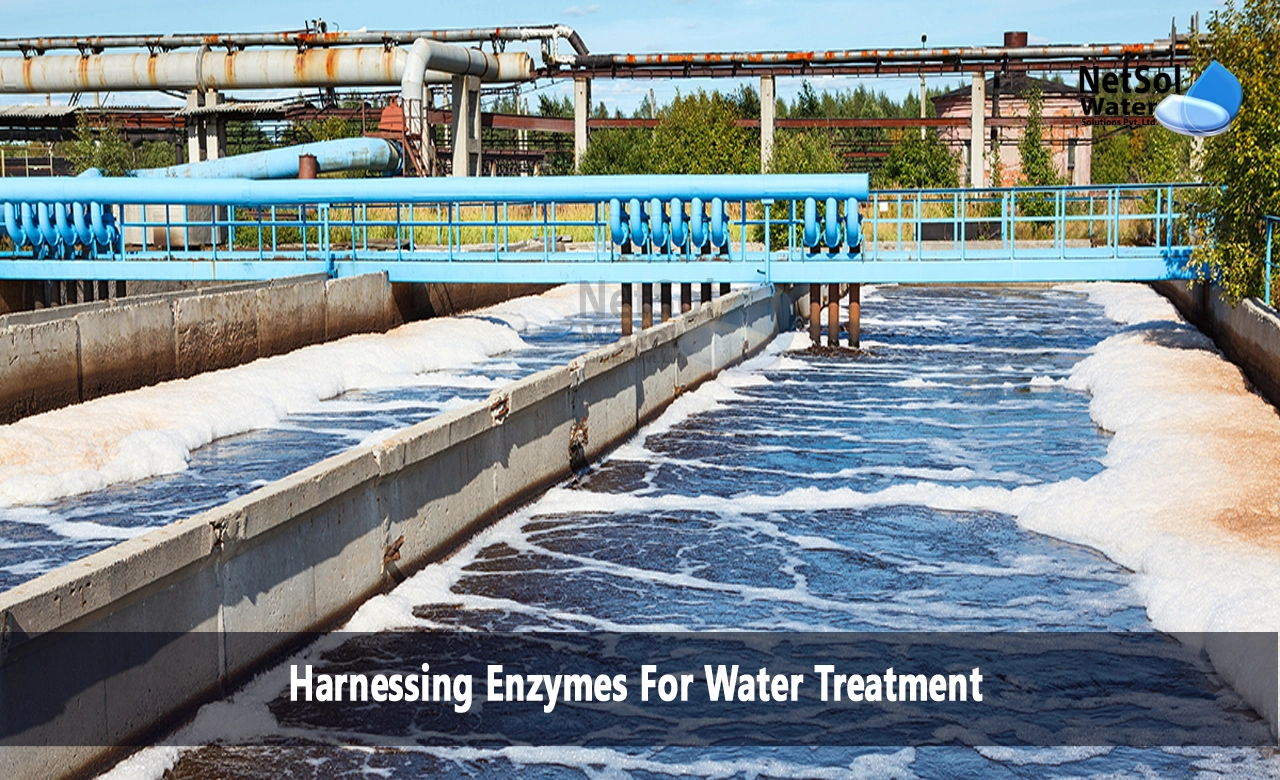How to Harness Enzymes For Water Treatment?
Access to clean water is a major challenge facing humanity. Water pollution from industrial, agricultural, and residential sources threatens water quality worldwide. Traditional water treatment methods like filtration, chlorination, and ozonation effectively remove contaminants but have drawbacks like high energy use, chemical byproducts, and inability to remove all pollutants. Using enzymes as a complementary water treatment method can enhance removal of certain contaminants while mitigating issues with current methods. Enzymes are proteins produced by living organisms that catalyze chemical reactions. Their high specificity and efficiency make them promising for water treatment applications.
Enzymes Used in Water Treatment
Many different enzymes have shown potential for treating water pollutants. Laccases are oxidoreductase enzymes that can degrade aromatic compounds like pharmaceuticals, pesticides, dyes, and endocrine disruptors. Peroxidases catalyze similar reactions using peroxides as co-substrates. Both enzyme types generate polymers that can flocculate and precipitate pollutants for removal. Proteases and lipases catalyze hydrolysis of proteins and fats, enabling removal of oils, greases, and microbes during wastewater treatment. Other enzymes like nitrilases, dehalogenases, and nitrogenases can help remove nitrogenous compounds, heavy metals, and halogenated organics.
Cellulases and amylases degrade larger molecules like cellulose and starch into smaller sugars, which aids in breaking down organic matter. Alkaline phosphatases remove excess phosphate that causes eutrophication. Catalase and superoxide dismutase enzymes help remove toxic reactive oxygen species. Sulfate-reducing bacteria produce sulfatase for removing sulfur contaminants. The diversity of enzymatic reactions presents abundant opportunities for targeting many different water pollutants.
Enzyme Immobilization
However, enzymes require careful handling to maintain activity. They are sensitive to environmental conditions like temperature, pH, and ionic strength. Free enzymes dissolved in water can denature over time and be difficult to reuse. A solution is enzyme immobilization, where enzymes are attached to solid supports like nanoparticles, membranes, or beads. This preserves enzyme structure and retains catalytic activity. Immobilization also allows repeated use of enzymes in continuous flow reactors, enhancing process efficiency.
Many immobilization methods have been developed. Enzymes can be crosslinked or adsorbed onto supports. Containment methods trap enzymes within gels, microcapsules, or fibers. Carrier-binding uses chemical functional groups to link enzymes to supports. Techniques like entrapment, encapsulation, and self-immobilization incorporate enzymes into insoluble matrices. Proper immobilization allows high enzyme loading and activity but with enhanced stability for industrial applications.
Bioreactors for Enzymatic Water Treatment
Bioreactors optimize conditions for enzymatic reactions, enabling continuous water treatment. Packed-bed reactors contain immobilized enzymes on supports like activated carbon through which polluted water flows. Enzymes degrade contaminants as the water passes through uninterrupted. Membrane bioreactors couple enzymatic treatment with membrane filtration, using permeable membranes to retain enzymes while purified water passes through. Fluidized bed reactors suspend enzyme-bound nanoparticles in contaminated water - catalytic reactions occur on the particle surfaces.
Sequencing batch reactors cycle between filling, reaction, settling, and draining stages to treat water in batches while retaining enzymes. New electrochemical bioreactors apply electric fields to further improve enzyme efficiency. Hybrid reactors combine multiple approaches like enzymes with microbes, photocatalysis, or other chemical processes for augmented treatment capabilities. Bioreactor design can tailor enzymatic water treatment to different scales, from decentralized systems for small communities to large-scale municipal wastewater treatment plants.
Current Use and Future Outlook
While most applications are still in early research and development phases, enzymes show great promise for advanced water treatment. Peroxidases have been used to treat petrochemical wastewater and remove aromatic compounds from paper mill effluent. Laccase-mediated processes reduced antibiotic residues in hospital wastewater. Lipases improved kitchen wastewater treatment at a commercial food facility. Enzymatic bioreactors decolorized dyes from textile wastewater and removed endocrine disruptors from drinking water sources.
Looking ahead, technical improvements like enzyme engineering, immobilization materials, and bioreactor design can help scale up enzymatic treatment processes. Combining enzymes with technologies like membrane filtration, advanced oxidation, and photocatalysis can augment performance. Machine learning can optimize reactor operations and conditions. Regulations will need to evolve to approve enzymatic treatment for public water systems. More demonstration projects are needed to evaluate long-term feasibility and cost-effectiveness.
The high specificity and mild operating conditions of enzymatic treatments can fill capability gaps in existing water treatment infrastructure. With more research, enzymes may become a mainstream approach for mitigating pressing water quality issues. Their ability to degrade recalcitrant new pollutants will only grow more valuable as traditional methods fail to meet tighter regulations. Harnessing the catalytic power of nature's catalysts holds promise for sustaining clean and safe water resources for the future.
Conclusion
In conclusion, enzymes have significant yet largely untapped potential for transforming water treatment due to their versatility, specificity, efficiency, and eco-friendliness. More development is still needed to fully incorporate enzymatic processes into water treatment on a broad scale. However, enzymes are poised to become a critical tool for tackling ever-growing water pollution challenges. With the right research investments and policies, enzyme-based treatments could provide sustainable solutions for safeguarding global water resources as part of an integrated water management strategy. Their unique benefits make enzymes a promising new approach to ensure access to clean water for all.
Do you need an advice or assistance on selecting the best water and waste water treatment unit? We have solutions for all your problems!
Let us know your problem, our experts will make sure that it goes away.
For an assistance or related query,
Call on +91-965-060-8473 Or write us at enquiry@netsolwater.com



